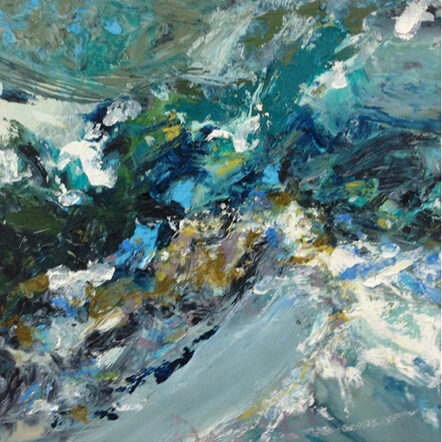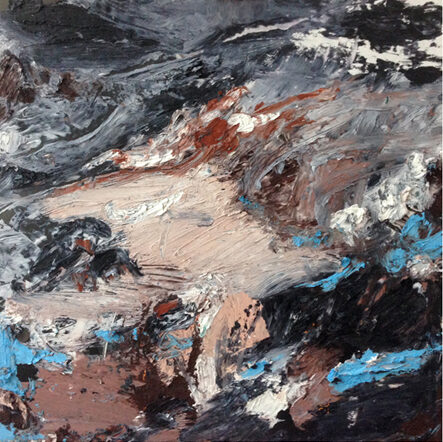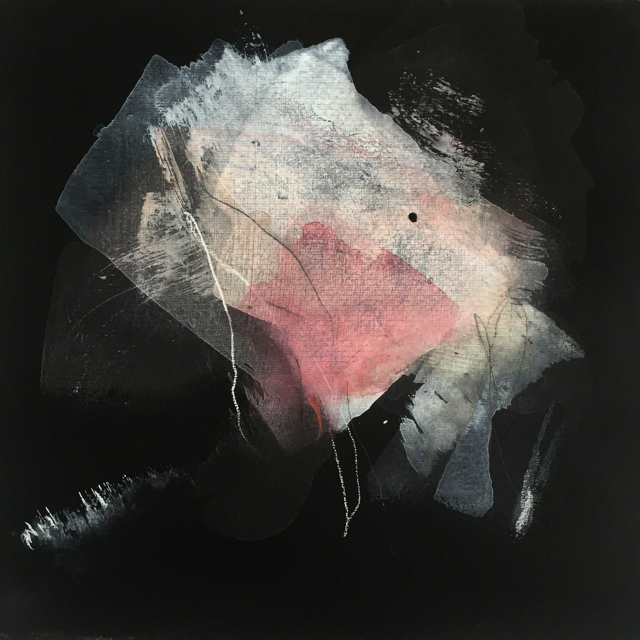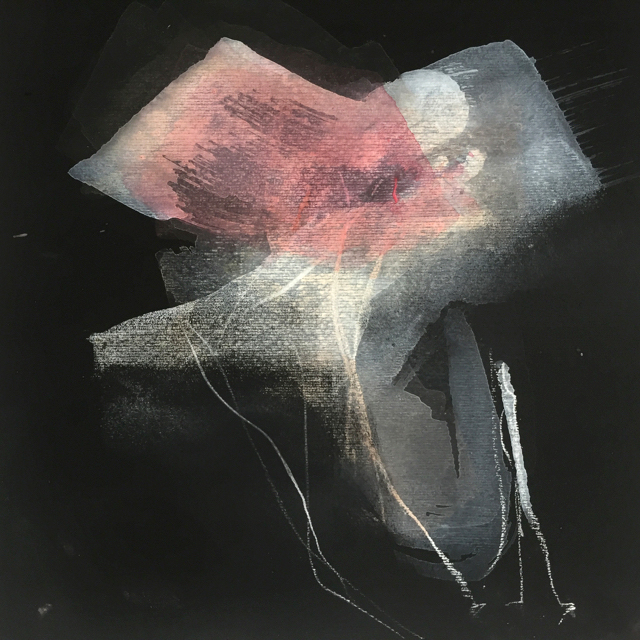Abstract Painting – An Approach.

Angelika Richter, Düsseldorf 2019, abstract painting, Untitled, oil paint on canvas, 100 x 80cm, from the series color crush
Abstract painting is a form of visual art that refrains from faithfully depicting visible reality. Instead of recognisable objects such as landscapes, people or everyday objects, it uses colour, form, line and structure to express feelings, thoughts or concepts. The focus is not on what we see, but on what we feel – each work leaves plenty of room for individual interpretation.
History of the development of abstract painting
Bereits im späten 19. Jahrhundert zeigten sich erste Ansätze der Abstraktion. Künstler wie James McNeill Whistler, Odilon Redon oder die Vertreter des Symbolismus begannen, die Realität zunehmend zu verfremden oder in eine subjektive Bildsprache zu übersetzen. Auch die Werke von Paul Cézanne oder die Farbstudien der Impressionisten lösten sich teilweise vom naturalistischen Abbild und legten den Grundstein für eine neue, freiere Form der Malerei. Diese frühen Experimente ebneten den Weg für eine Kunst, die nicht mehr die äußere, sondern die innere Wirklichkeit ins Zentrum rückte.

Angelika Richter, Düsseldorf 2024, abstract painting, Untitled, acrylic on canvas, 120 x 140cm, from the series out and about
Abstract painting emerged as an independent movement at the beginning of the 20th century, when artists began to radically break away from traditional forms of representation. One of the most important pioneers was Wassily Kandinsky, who was one of the first to completely abandon representational motifs in 1911. Artists such as Kazimir Malevich, Piet Mondrian and later Jackson Pollock also contributed significantly to the development of abstract art. They searched for new forms of expression to visualise the increasing complexity of the world, inner states or spiritual experiences.
Instead of providing clear meanings, abstract painting opens up a space for your own associations, impressions and sensations. It challenges, arouses curiosity and invites you to think freely – not about what is depicted, but about what lies behind it.
Absolute Painting?
o-called absolute painting is a special form of abstract painting – and goes one step further. While abstract works often contain reduced or alienated references to the visible world, absolute painting completely dispenses with any representational depiction. It shows no landscapes, no figures, no symbols – and does not want to. Instead, it concentrates entirely on the means of painting itself: Colour, line, surface, rhythm and composition.
The term originates from the art theoretical discussion of the early 20th century and summarises an essential concept: absolute painting stands for an understanding of art in which the work is completely autonomous. It refers to nothing outside itself, but derives its meaning exclusively from its inner order and visual effect. The painting is what it shows – nothing more and nothing less.
This attitude is clearly different from other movements within abstract art. Not all abstract painting is absolute painting. Many abstract works contain subtle echoes of real forms or moods – such as landscapes, movements or bodies. Absolute painting, on the other hand, radically detaches itself from such references. It does not represent anything, but exists as a pure visual event. All absolute painting is therefore abstract, but not all abstract painting is absolute.
This approach was characterised above all by artists such as Wassily Kandinsky, Piet Mondrian and Kazimir Malevich. They searched for a universal, timeless visual language that transcended cultural and linguistic boundaries. Their works – such as Malevich’s famous ‘Black Square’ or Mondrian’s compositions of lines and primary colours – are still regarded today as radical examples of absolute art.
Absolute painting is not about what it tells, but about what it triggers in the viewer. It demands active viewing, raises questions and opens up new spaces for thought and perception. Its power lies in its reduction – and in its clarity often a surprising depth.
Techniques of abstract painting
The techniques of abstract painting are as varied as the artists themselves. Some work with thick, impasto layers of paint, others with fine glazes or large areas of colour. Paint is spread, dripped, poured or scraped – the classic brushstroke is no longer the only method. Particularly in gestural painting, such as Jackson Pollock’s, physical expression takes centre stage: paint is poured or flung directly onto the canvas, turning the picture into a kind of visible record of movement. In other approaches, such as constructive abstraction, precise lines and geometric structures dominate, often realised with the help of a ruler, adhesive tape or stencils.


Abstract works, Angelika Richter, oil crayon on paper
Mixed techniques and experimental materials also play a major role – sand, ash, textiles or even found objects can become part of the painting. In contemporary abstract painting, the boundaries to digital techniques, photography or collage are also becoming blurred. The decisive factor is not so much the ‘how’, but what becomes perceptible through the technique: a mood, a rhythm, an idea.
Is abstract painting easier than figurative painting?
At first glance, abstract painting may often seem simpler – after all, it dispenses with perspective, proportions and a ‘correct’ depiction of people, landscapes or objects. Painting a realistic portrait requires a deep understanding of anatomy, light and form – it seems more technically complex.
However, this technical precision is not the only measure of artistic quality. In abstract painting, the challenge lies elsewhere. It is about using very reduced means – colour, form, rhythm, surface – to create a coherent, powerful composition that works entirely without an object. An abstract painting can fail despite (or precisely because of) its simplicity if it lacks a sense of balance, tension or expression.
In addition, abstract painting requires a high degree of artistic clarity. The painting process is often more intuitive, but at the same time also more radical: there is no motif to orientate yourself by – everything arises from your own feelings and the decision in favour of or against certain forms. You work with the uncertain. And that doesn’t necessarily make it any easier.


Gouache on Gesso, 30 x 30cm, Angelika Richter
The fascination of abstract painting for viewers
What fascinates many people about abstract painting is precisely what it lacks: a clear guideline. Without recognisable motifs or a narrative plot, the eye is freed for something personal and intuitive. You begin to discover your own meanings in colours, shapes and structures – almost like in a mirror that doesn’t dictate anything, but only reflects what you bring with you.
This openness can be very liberating. It allows you to engage with a work of art in a purely emotional way – regardless of prior knowledge or art historical context. You don’t look at what is depicted, but how it works. Some pictures speak through their energy, others through calm, harmony or tension. It is precisely this immediacy that touches many people deeply, because it leaves room for personal feelings without being instructive.
At the same time, abstract painting challenges the eye. It forces us to take a closer look, to get involved, to ask questions. This interplay of free interpretation and intensive perception is what makes it so appealing – and often leaves a lasting impression.
If you are interested in abstract painting, you are very welcome to visit me in my studio in Düsseldorf-Flingen. Simply make an appointment via my contact page. Or visit me at the Kunstpunkte Düsseldorf.

 deutsch
deutsch